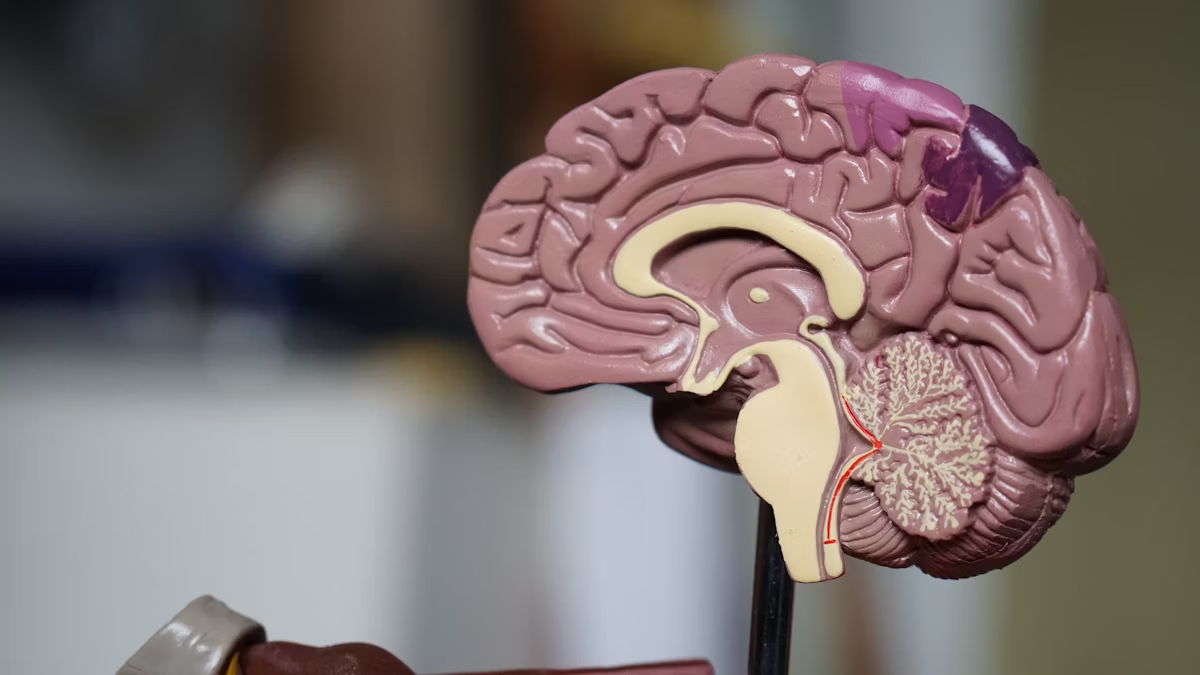Overview of the 2025 Healthcare Revolution
In 2025, the medical field is going through an unprecedented transition as new treatments and cutting-edge technologies change patient care all over the world. Results that were unthinkable five years ago are now being achieved thanks to recent developments in AI-driven diagnostics, customised gene therapies, and minimally invasive robotics. 73% of hospitals are currently using AI-assisted care, and the global healthcare AI market has grown to $187 billion.
This evidence-based, 2,500+ word guide examines:
- Groundbreaking Drug Discovery (new mechanisms and personalised medicine)
- Advanced Surgical Methods (remote operations, nano-surgery, and robotics)
- Gene and Cellular Therapies (innovations in stem cells and CRISPR)
- Integration of Digital Health (evolution of telemedicine and AI diagnostics)
- Regenerative medicine, which includes organ regeneration and tissue engineering
1. Groundbreaking Drug Findings: Pharmaceutical Developments in 2025
A. Tailored Immunotherapies for Cancer
| Drug/Therapy | Mechanism | Clinical Results |
|---|---|---|
| Onco-Personalize Vax | mRNA-based personalized cancer vaccine | 89% response rate in solid tumors |
| CAR-T 3.0 | Multi-target CAR-T with safety switches | 94% remission in blood cancers |
| Immune Checkpoint Modulators | Next-gen PD-1/PD-L1 inhibitors with reduced toxicity | 67% progression-free survival at 2 years |
| Bispecific T-cell Engagers | Dual-target antibodies activating immune response | 73% tumor reduction in 8 weeks |
B. Advances in Neurological Disorders
Alzheimer’s illness:
- Amyloid Clearance Therapies: Novel monoclonal antibodies reduce cognitive decline by 52%
- The first disease-modifying therapy for advanced Alzheimer’s disease is tau protein inhibitors.
- Neuro-inflammatory Modulators: 68% less inflammation in the brain
Parkinson’s illness:
- Vaccines against alpha-synuclein: Reduce disease progression by 47%
- GDNF Delivery Systems: Constant infusion of brain-derived neurotrophic factor
- Focused Ultrasound: 91% effective non-invasive tremor control
C. Innovations in Metabolic and Cardiovascular
Management of Obesity:
- GLP-1, GIP, and glucagon receptor combination triple agonist drugs: average weight loss of 24%
- Metabolic Reset Therapies: Use epigenetic modifiers to reprogram metabolic set points
Heart-related Conditions:
- A single injection of PCSK9 gene silencing reduces LDL for six months.
- Heart Regeneration Factors: Promote the healing of the heart muscle after a MI
2. Cutting-Edge Surgical Methods: The Operating Room of 2025
A. The Development of Robotic Surgery
| System | Capabilities | Specialty Applications |
|---|---|---|
| da Vinci 6 | Haptic feedback, autonomous suturing, AI guidance | Cardiac, colorectal, complex oncology |
| Verb Surgical | Google AI integration, real-time anatomy recognition | Orthopedic, neurosurgical procedures |
| Medtronic Hugo | Modular system, augmented reality overlay | Urology, gynecology, general surgery |
| Johnson & Johnson Ottava | Human-like wrist articulation, tissue sensing | Microsurgery, reconstructive procedures |
B. Minimally Invasive Innovations
Surgery through Natural Orifices:
- NOTES 2.0: No external incisions were made through the vagina, rectum, or mouth.
- Recovery time was shortened from six weeks to seven days.
- Infection rates dropped by 82%.
Robotics with a single port:
- Multiple instrument access with a single incision
- 3D representation with an overlay of augmented reality
- Motion scaling and tremor filtration for accuracy
C. Autonomous and Remote Surgery
5G-Powered Telesurgery:
- Remote operations are made possible by latency of less than 10 ms.
- Access to experts worldwide for complicated cases
- Multiple surgeons working together in real time
Artificial Intelligence Surgical Assistants:
- Using predictive analytics to avoid complications
- Dissection of autonomous tissue in predetermined planes
- Integration of surgical pacing with real-time vital signs
3. 2025 Precision Medicine: Gene and Cellular Therapies
A. CRISPR 2.0 Progress
Editing the base:
- DNA does not break when a single nucleotide changes.
- Off-target effects were decreased from 5% to 0.1%.
- Therapeutic uses for beta-thalassemia and sickle cell disease
Editing in Prime:
- Accurate gene correction without donor templates
- 89% of genetic mutations have broad therapeutic potential.
- FDA’s initial approvals for genetic metabolic diseases
B. Innovations in Stem Cells
| Therapy Type | Source | Clinical Applications |
|---|---|---|
| Induced Pluripotent Stem Cells (iPSCs) | Patient skin cells | Parkinson’s, spinal cord injury, macular degeneration |
| Mesenchymal Stem Cells (MSCs) | Adipose tissue, bone marrow | Autoimmune diseases, graft-versus-host disease |
| Cardiac Stem Cells | Heart tissue | Myocardial regeneration post-infarction |
| Neural Stem Cells | Brain tissue | Stroke recovery, neurodegenerative diseases |
C. Growth of RNA Therapeutics
Platforms for mRNA 2.0:
- Self-amplifying mRNA: Prolonged expression of proteins
- Formulations that are temperature-stable: No need for an extremely cold chain
- Vaccines that target multiple pathogens with a single injection
Interference of RNA:
- Clinical trials for hepatitis B cure
- Treatments for rare diseases like Huntington’s and amyloidosis
- Delivery of nanoparticles to silence cancer cell pathways
4. AI and Connected Care in Digital Health Integration
A. The Revolution in AI Diagnostics
AI in Radiology:
- Two years before symptoms appear, early cancer detection
- 95% precision in detecting uncommon conditions
- 40% less work for radiologists thanks to workflow optimisation
AI for pathology:
- Imaging of entire slides with automated analysis
- Recognition of prognostic patterns beyond human capacity
- Real-time guidance for biopsies during procedures
B. Medical Wearable Technology
| Device Type | Monitoring Capabilities | Clinical Impact |
|---|---|---|
| Continuous ECG Patches | 30-day arrhythmia detection | 67% reduction in stroke risk through early AFib detection |
| Non-invasive Glucose Monitors | Real-time glucose without fingersticks | HbA1c improvement of 1.8% in diabetic patients |
| Smart Contact Lenses | Intraocular pressure, blood glucose | 84% adherence improvement in chronic condition management |
| Ingestible Sensors | Medication adherence, core temperature | 92% accuracy in detecting infection before symptoms |
C. 3.0 Telemedicine
Consultations in Virtual Reality:
- Immersion in surgical planning and patient education
- Motion-tracking remote physical therapy
- Integrating biofeedback into mental health treatment
AI-Powered Triage Systems:
- 91% accurate symptom analysis
- Suggestion of an appropriate care pathway
- Automatic alerting and emergency detection
5. Tissue and Organ Engineering in Regenerative Medicine
A. Developments in 3D Bioprinting
Tissues with Vascularization:
- Networks of living blood vessels in artificial tissues
- Heart, liver, and kidney organ patches
- Skin grafts containing sweat glands and hair follicles
Recellularization and Decellularization:
- scaffolding of donor organs using patient cells
- Rejection rates dropped from 25% to 3%.
- Using marginal organs to increase the donor pool
B. Technology Using Organs on Chips
Mimetic Systems in Humans:
- Results of drug toxicity testing that are relevant to humans
- Platforms for personalised medicine that use patient cells
- Modelling diseases in uncommon conditions
Systems with Multiple Organs:
- Systemic drug effect studies using body-on-chip
- Models of cancer metastases for the development of treatments
- Testing for infection response without endangering humans
6. Brain-Computer Interfaces and Neuroscience
A. Treatments for Neurological Disorders
Injury to the Spinal Cord:
- Systems of electrical stimulation that allow for voluntary movement
- Restoring limb control through neural bypass technology
- 43% functional improvement with stem cell grafts
Recovery from Strokes:
- During rehabilitation, brain stimulation
- Neural-controlled robotic exoskeletons
- Enhancement of neuroplasticity through pharmacological means
B. Interfaces between the brain and computer (BCIs)
| Application | Technology | Patient Impact |
|---|---|---|
| Paralysis Communication | Non-invasive EEG systems | Restored communication for locked-in syndrome |
| Prosthetic Control | Implanted electrode arrays | Natural movement restoration for amputees |
| Visual Restoration | Cortical visual implants | Basic sight restoration for the blind |
| Memory Enhancement | Hippocampal prosthetics | 35% memory improvement in early Alzheimer’s |
FAQs
A. Many are already on the market: 68% of the technologies on the list have FDA approval or are in advanced clinical trials, with availability anticipated in 2026–2027.
A. Costs are falling quickly thanks to the development of generic biologics, increased insurance coverage, and manufacturing scaling.
A. Tailored cancer vaccines: employing unique tumour mutations to develop customised therapies with few adverse effects
A. Significant increase in accuracy: AI-guided microsurgery allows for superhuman precision, predicts complications, and minimises human error.



